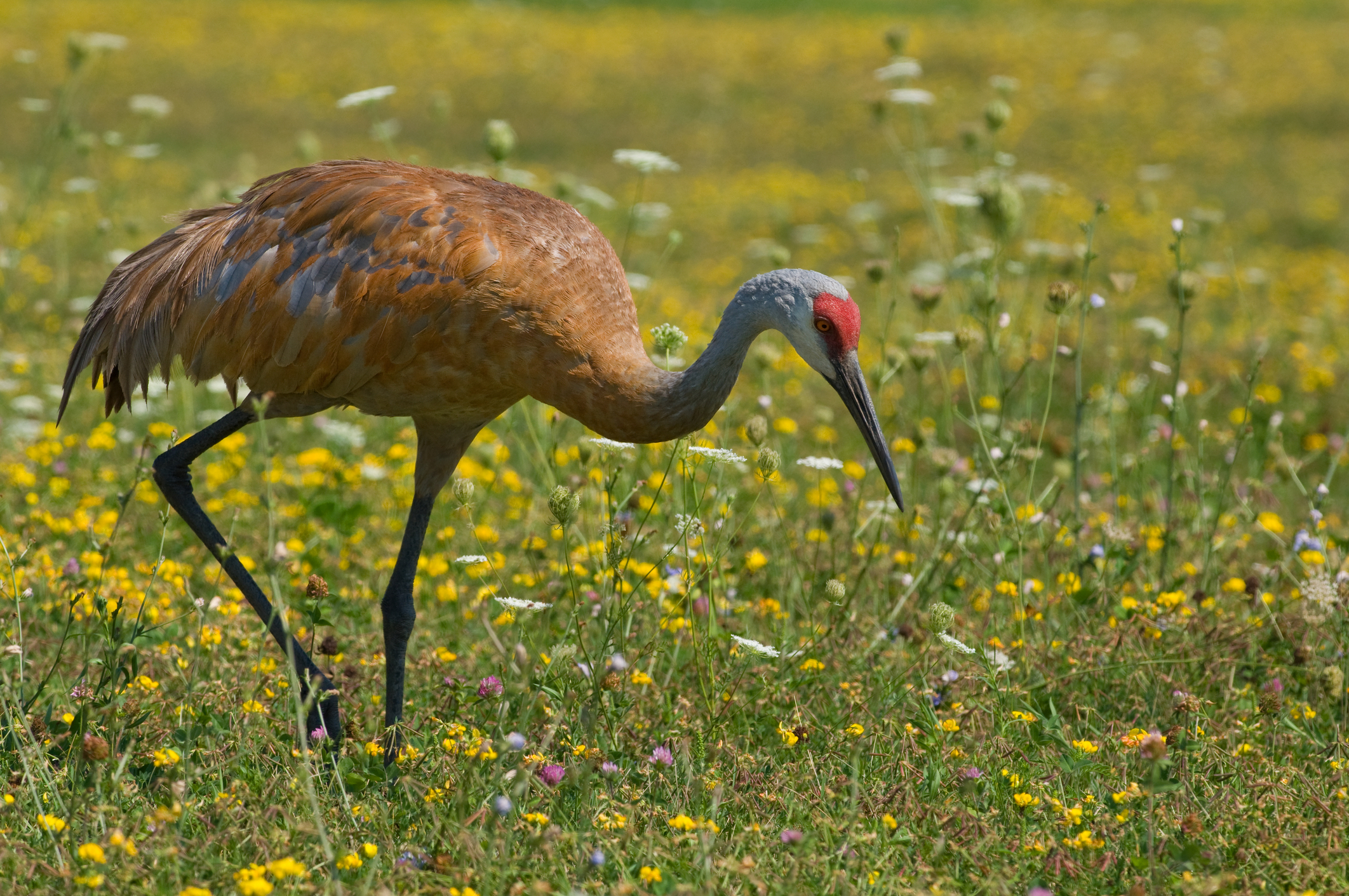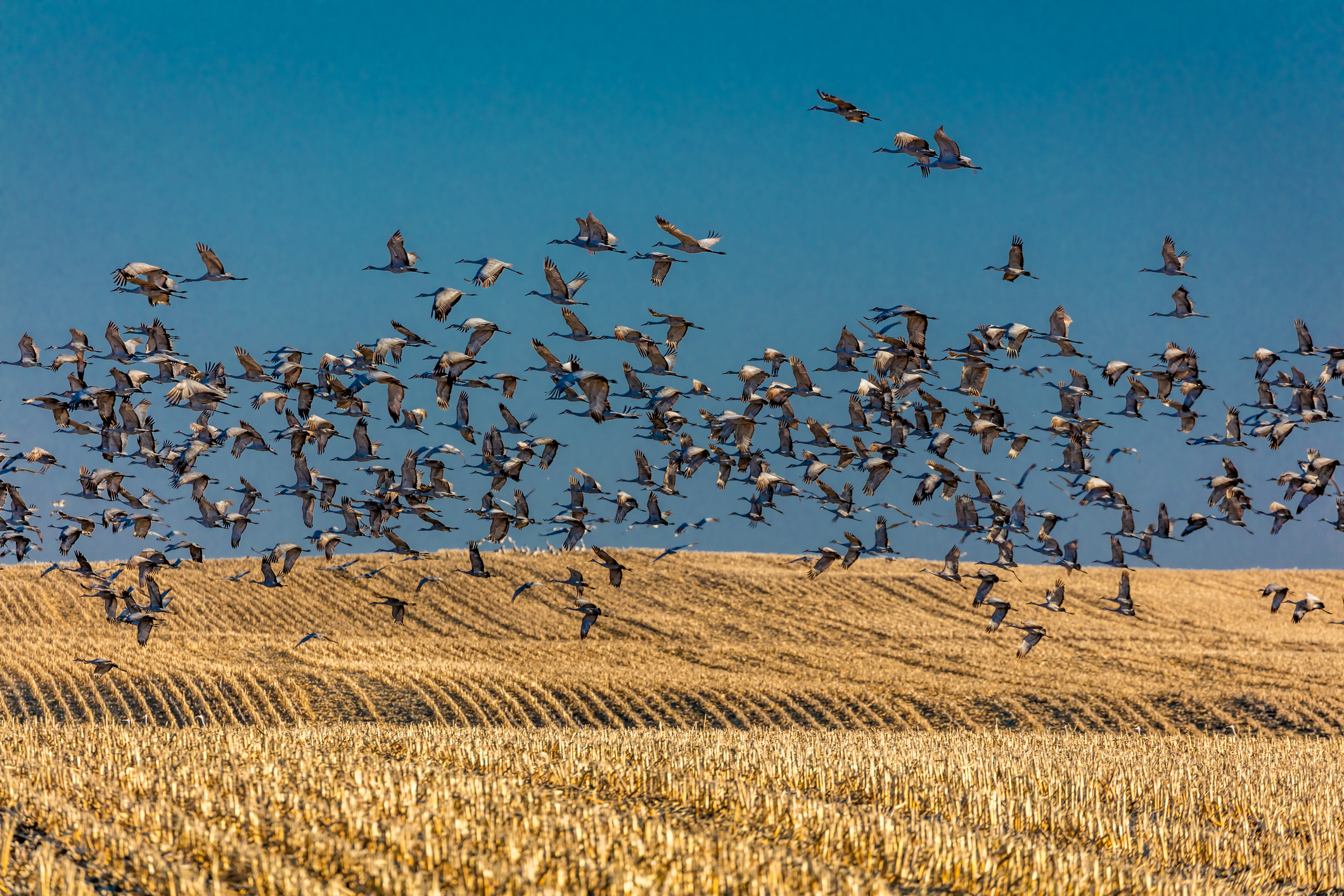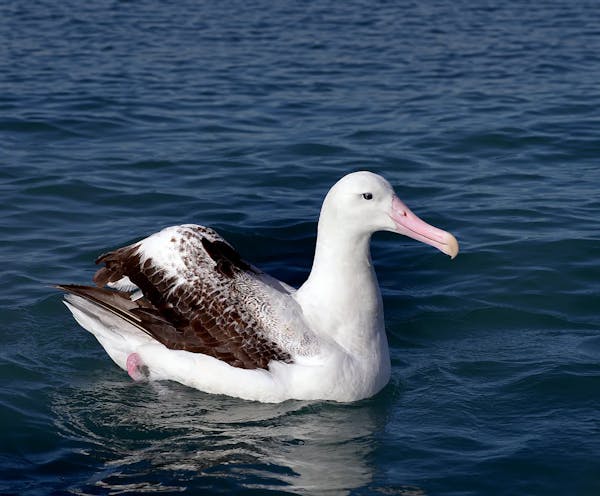The remarkable journey of the sandhill crane across North America
- Nature Conservation
- Land Conservation
- Iconic Species
- Wildlife
- Birds
- Great Plains
- Northern America Realm
One Earth’s “Species of the Week” series highlights an iconic species that represents the unique biogeography of each of the 185 bioregions of the Earth.
Across North America and into extreme northeastern Siberia, sandhill cranes (Antigone canadensis) gather where water meets open land. They frequent marshes, bogs, swales, freshwater wetlands, open prairies, and pastures, often staying close to the water's edge.
The central Platte River Valley in Nebraska is a globally significant stopover site for migrating cranes. Each March, roughly one million birds pause in this region to rest and feed on their journey north.
.png)
In the One Earth Bioregions Framework, the sandhill crans is the iconic species of the Southern Prairie Mixed Grasslands (NA20), located in the Great Plains subrealm of Northern America.
Graceful travelers of the sky
Adult sandhill cranes are primarily gray and often appear ochre-stained during the breeding season. They display red foreheads, white cheeks, and long, dark, pointed bills. In flight, their long legs trail behind them while their long necks remain straight.
Their typical height ranges from about 80 to 136 centimeters (2.6 to 4.5 feet), and their wingspans commonly reach 1.65 to 2.30 meters (5.4 to 7.5 feet), with an average close to 200 centimeters (6.6 feet).
With large wings and skillful use of thermals, sandhill cranes can soar for hours with minimal effort, a strategy that supports their long migrations and enables massive flocks to gather.
A flexible diet that tracks seasons
Primarily herbivorous, sandhill cranes adapt easily to local food sources. They forage for seeds in shallow vegetated wetlands and search uplands and farm fields for grains such as corn, wheat, cottonseed, and sorghum.
Waste corn, the byproducts of corn harvesting like stalks, husks, cobs, and leaves, is especially valuable prior to migration. Cranes breeding in the north expand their diet to include berries, insects, snails, reptiles, amphibians, and small mammals.

A more ochre colored sandhill crane probing a summer midwestern meadow for food. Image Credit: © Gerald Deboer, Dreamstime.
A dynamic role in wetland and prairie food webs
By consuming waste grain and natural seeds, cranes help transfer energy from fields and wetlands into large migratory flocks. Their foraging connects plant and animal communities across river valleys, prairies, and marshes.
Eggs and chicks are vulnerable to predation by both birds and mammals, while adults defend against aerial and terrestrial predators. This place in the web highlights cranes as both consumers and prey within the ecosystems they inhabit.
Life in family groups and flocks
Cranes are highly social. Pairs and family groups stay together through much of the year. During migration and winter, unrelated birds form larger survival groups that forage and roost together, sometimes in the thousands.
Wintering flocks can exceed 10,000 birds in places like Bosque del Apache National Wildlife Refuge in New Mexico, where an annual November festival celebrates their arrival.
Nesting and raising young
Cranes raise one brood per year. In migratory populations, laying usually begins in April or May, while nonmigratory birds may lay between December and August.
Both members of a pair build a nest from local plant material. Females lay one to three eggs, typically two, and both parents incubate for about 30 days. Chicks hatch covered in down, leave the nest within a day, and are brooded for up to three weeks.
Parents feed them intensively at first, then gradually less until independence at 9 to 10 months. Young remain with parents until shortly before the next year’s nesting, then join nomadic flocks until they pair between two and seven years of age.

Sandhill crane and chick. Image Credit: © Kirsten Wahlquist, Dreamstime.
Threats to survival
Eggs and chicks face predation from corvids such as ravens and crows, gulls, jaegers, great horned owls, American mink, raccoons, and coyotes. Bald eagles, golden eagles, and bobcats can prey on cranes of various ages. Adults defend themselves with open wings, hissing, stabbing bills, and powerful kicks.
Regulated hunting is permitted in 17 states throughout much of the Central Flyway. Nebraska is the only Central Flyway state where crane hunting is illegal. Since the 1990s, cranes have also competed with abundant snow geese for waste corn at key stopover sites. Habitat loss and fragmentation continue to pressure localized populations.
Conservation status and targeted recovery
As a species, the sandhill crane is classified as Least Concern. However, some subspecies face greater risks. The Mississippi sandhill crane experienced severe declines, prompting the establishment of the Mississippi Sandhill Crane National Wildlife Refuge and the world’s largest crane release program. By 2013, about 25 breeding pairs were recorded there, with most birds raised in captivity for release.
The Cuban sandhill crane population was estimated at around 700 in 2017. Major threats include habitat loss, predation by non-native mammals, poaching, and population fragmentation.
Recovery across mainland North America has been significant. Cranes were nearly extirpated east of the Mississippi River in the 1930s but rebounded to an estimated 98,000 individuals in that region by 2018. Strong recoveries have been reported in parts of the Midwest, with a northward expansion reaching as far as New York. Translocation of captive-reared birding programs are among the tools used to support vulnerable subpopulations.

Migratory sandhill cranes fly over cornfield in Grand Island, Nebraska. Image Credit: © Joe Sohm, Dreamstime.
Our connection to Nebraska’s Platte River Valley
One Earth’s Digital Media Director, Lindsey Schueman, grew up in Grand Island, Nebraska, where the annual sandhill crane migration marks a season of its own. Each spring, the sky fills with the sound of bugling calls as thousands of cranes descend on the Platte River. Locals and visitors alike pull their cars to the side of the highway to witness the spectacle, a communal pause to experience one of the world’s great migrations.
For Lindsey, these early experiences left a lasting impression of connection between people, place, and the natural world. Each year, as the cranes return, they carry the same message: a reminder that our lives are intertwined with the rhythms of the Earth.
Support Nature Conservation



